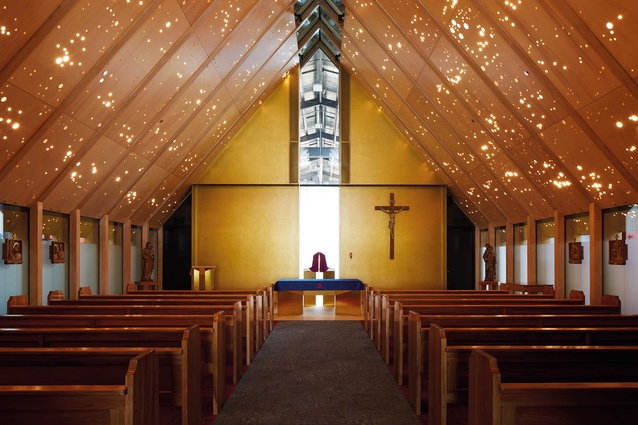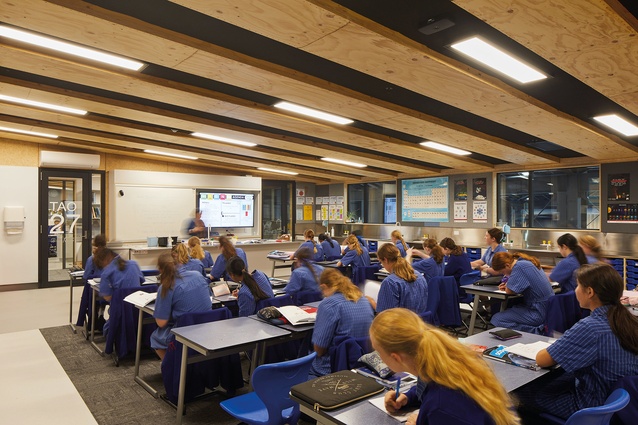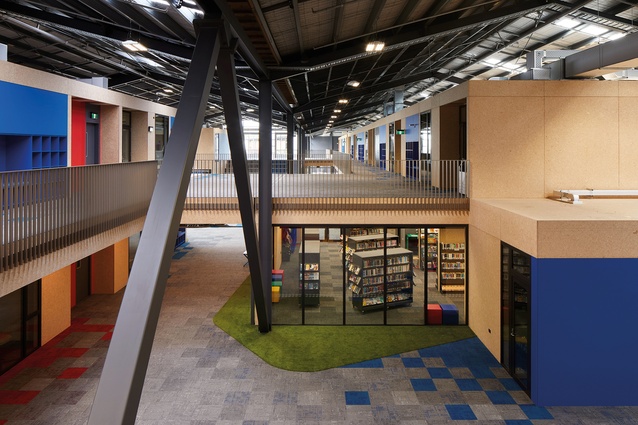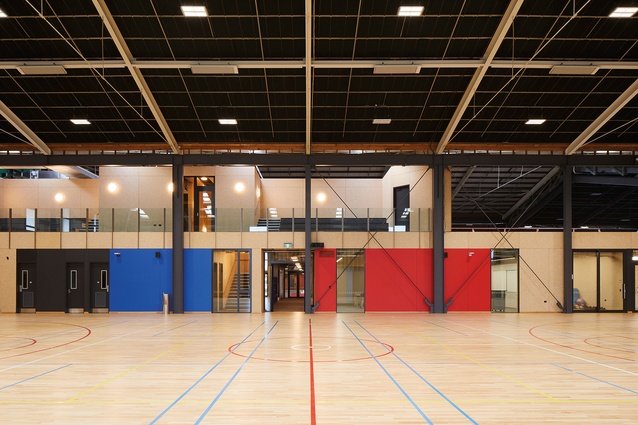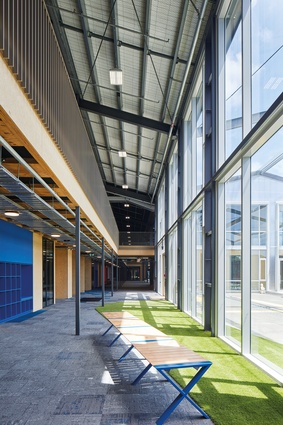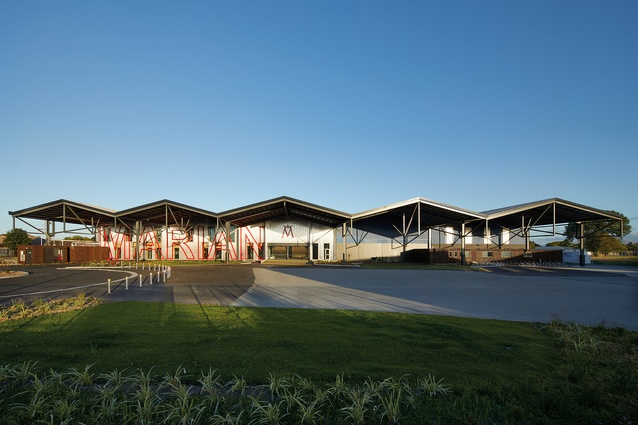2024 Interior Awards, Education Award winner
Congratulations to this year’s Education Award winner — Marian College by Sheppard & Rout Architects.
The jury’s comment:
“Set within a disused industrial enclosure, this highly innovative adaptive reuse project challenges our perception of a typical education environment. Working within a constrained budget, prefabricated pods are cleverly placed to form a cluster of interiors within an interior. Teaching and admin pods are complemented with generous social spaces and sports courts, while the insertion of a jewel-like chapel to serve as a place of reflection for both akonga and the hapori is the taonga of the space. The interior feels surprisingly light, with a simple but fun and effective colour and material palette. This refreshing, unconventional design, potentially a world first, encourages us to explore design solutions beyond the obvious.”
PROJECT DETAILS:
Location: Christchurch
Client: Catholic Diocese of Christchurch
Building area (m2): 13,050m2
Project brief:
Post Canterbury earthquakes saw Marian College relocated to their temporary Barbadoes Street Campus. Subsequently, the Catholic Diocese of Christchurch purchased an existing 32,000m2 Papanui site with a 17,000m2 Toll Logistics warehouse. Adaptive re-use and sustainability was central to the College’s ethos, along with faith, cultural diversity, community, future growth and challenging financial targets, all helping to inform the brief. A ‘School within a Warehouse’ needed to follow MOE guidelines and provide adequate spaces for administration, communal gathering and teaching facilities for science, art, food prep, textiles, digital technologies, sports, performing arts and Rreligious contemplation.
Credits:
- Project principal – Jasper van der Lingen
- Architectural lead – Jonathan Kennedy
- Architectural graduates – Mikayla Exton, Tom Holden, Thomas Strange
- Senior Interior Designer – Mel North
- Interior Designer – Ella van der Lingen
“Historically, the site was an ancient podocarp ecosystem with local cultural and symbolic significance. The existing warehouse was reduced to a 10,000m2 footprint rather than facing demolition. External cladding was strategically reworked to enhance the proposed plan, bringing natural light flooding into communal, sporting and teaching spaces. The hard industrial aesthetic was softened by carefully crafted two-storey timber boxes weaving between the rigorous structural shell. Utilising the existing double-height space through a deliberate wandering circulation reimagined the forest fabric, all demonstrating tikanga principles of adaptability, sustainability and rejuvenation at the project’s heart.” - Jasper van der Lingen
Watch the finalist presentation here:
With thanks to our Interior Awards 2024 sponsors. Find out more about each of our sponsors here.



